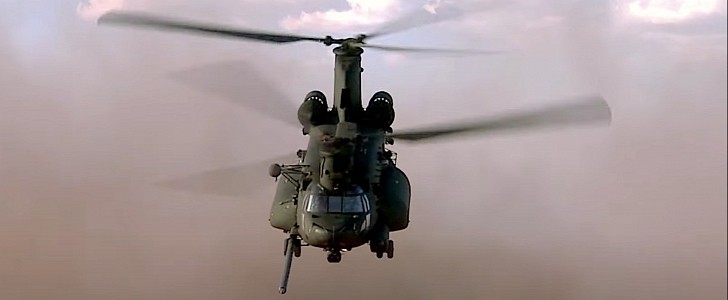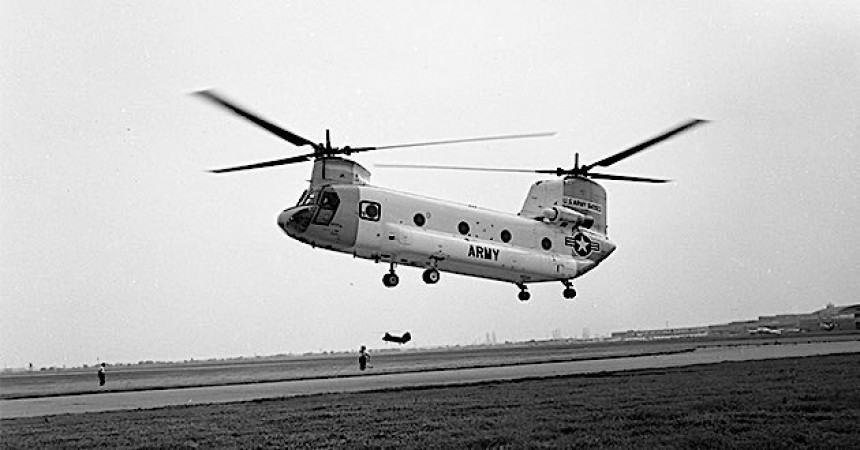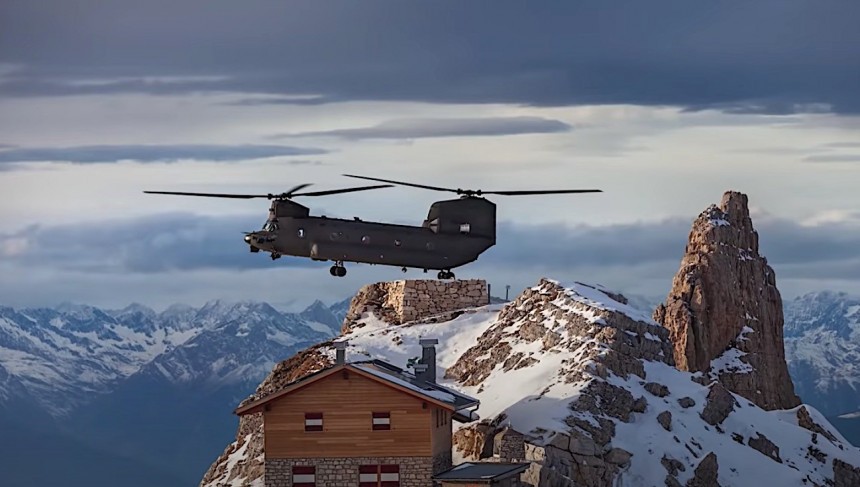On September 21, 1961, Boeing conducted the first flight of a very strange contraption that would come to be known as the CH-47 Chinook. The helicopter thus turned 60 earlier this week, but the moment passed with few people taking notice and properly celebrating.
The Chinook came to be at a time when helicopters were becoming indispensable for the American military. The Vietnam War was in full swing, taking its toll on troops and hardware alike, and helicopters were seen as the perfect tools for quick insertions and extractions in and from the dense landscape of the enemy country.
For the Chinook, the story did not start with the YCH-1B prototype first flown six decades ago, but as usual it was made possible by advancements made long before it came along.
It all started with American engineer Frank Piasecki, his Vertol Aircraft Corporation, and a project called HRP-1, which was the world’s first successful tandem-rotor aircraft, flown for the first time in March 1945.
That machine later evolved into the first helicopter to use overlapping tandem rotors, the HUP/UH-25, and a series of other variants that started being used by the U.S. Navy and the Marine Corps from 1949 for various operations. In 1953, the Air Force began making use of the aircraft as well, at first for rescue operations in the Arctic.
Then, in 1960, Boeing got its hands on Vertol and pushed hard for the production of new vertical flight machines, namely the Sea Knight and Chinook, whose story started with the said YCH-1B (pictured above).
In service with the military since one year after its first flight, the Chinook quickly established itself as an all-rounder. It first saw action as a workhorse for the U.S. 1st Cavalry Division, deployed in Vietnam in 1965, and the twin-engine, tandem rotor configuration must have been one of the strangest sights in the sky. It still is, but also a very capable heavy-lift helicopter, good for carrying a useful load of 26,000 lbs (11,793 kg).
It can do that thanks to the pair of Lycoming T55 turboshaft engines (4,800 shaft horsepower each) that are on deck to power it, while the massive blades that spin in opposite directions at the tip of the front and rear rotors (measuring 18.29 meters/60 ft)) give it a cruise speed of 291 kph (181 mph), and a service ceiling of 6,096 meters (20,000 ft).
Despite being made with military applications in mind, the Chinook is presently used by a large number of countries (about 11 of them) for anything from troop and cargo transport to medevac and firefighting duties.
While doing so, the aircraft became something of the king of pinnacle landings, those rescue or insertion operations that require the helicopter's rear end to be lowered on things like rooftops or cliffs, while the front is still in the air.
Having been in the air for 60 years is quite the accomplishment, and makes the Chinook the "longest running continuous production program in Boeing history and one of the longest in aviation history." But this machine is not nearly done with us yet, with Boeing saying it’s targeting a 100 years lifespan. To that end, of course, some modernization work is in order.
Back in May 2021, Boeing announced it is working with General Electric to create a much more powerful engine for the craft, rated at 7,500 shaft horsepower. A number of them have been undergoing testing starting with 2019, with the companies looking at how they perform in three gross weight configurations, at maximum torque, at an airspeed of up to 140 knots, while taking turns of up to 60 degrees angle of bank, and at altitudes up to 4,000 feet (1.2 km).
The tests seem to have gone just as planned, and the Chinooks survived, so those 100 years do not seem so far fetched. Here's to hoping that party will be a more high-profile one.
For the Chinook, the story did not start with the YCH-1B prototype first flown six decades ago, but as usual it was made possible by advancements made long before it came along.
It all started with American engineer Frank Piasecki, his Vertol Aircraft Corporation, and a project called HRP-1, which was the world’s first successful tandem-rotor aircraft, flown for the first time in March 1945.
That machine later evolved into the first helicopter to use overlapping tandem rotors, the HUP/UH-25, and a series of other variants that started being used by the U.S. Navy and the Marine Corps from 1949 for various operations. In 1953, the Air Force began making use of the aircraft as well, at first for rescue operations in the Arctic.
In service with the military since one year after its first flight, the Chinook quickly established itself as an all-rounder. It first saw action as a workhorse for the U.S. 1st Cavalry Division, deployed in Vietnam in 1965, and the twin-engine, tandem rotor configuration must have been one of the strangest sights in the sky. It still is, but also a very capable heavy-lift helicopter, good for carrying a useful load of 26,000 lbs (11,793 kg).
It can do that thanks to the pair of Lycoming T55 turboshaft engines (4,800 shaft horsepower each) that are on deck to power it, while the massive blades that spin in opposite directions at the tip of the front and rear rotors (measuring 18.29 meters/60 ft)) give it a cruise speed of 291 kph (181 mph), and a service ceiling of 6,096 meters (20,000 ft).
Despite being made with military applications in mind, the Chinook is presently used by a large number of countries (about 11 of them) for anything from troop and cargo transport to medevac and firefighting duties.
Having been in the air for 60 years is quite the accomplishment, and makes the Chinook the "longest running continuous production program in Boeing history and one of the longest in aviation history." But this machine is not nearly done with us yet, with Boeing saying it’s targeting a 100 years lifespan. To that end, of course, some modernization work is in order.
Back in May 2021, Boeing announced it is working with General Electric to create a much more powerful engine for the craft, rated at 7,500 shaft horsepower. A number of them have been undergoing testing starting with 2019, with the companies looking at how they perform in three gross weight configurations, at maximum torque, at an airspeed of up to 140 knots, while taking turns of up to 60 degrees angle of bank, and at altitudes up to 4,000 feet (1.2 km).
The tests seem to have gone just as planned, and the Chinooks survived, so those 100 years do not seem so far fetched. Here's to hoping that party will be a more high-profile one.





























